MIKE: This calls for a celebration. Vyv, throw another record player on the fire.
VYVYAN: Oh, certainly, Michael.
RICK: You bastard! That’s my record player!
MIKE: [to Vyv] You said it was your record player.
VYVYAN: No, I didn’t, Mike. I said “Let’s throw Rick’s record player on the fire, that’ll be good for a laugh.”
MIKE: Oh, yeah, that’s right. Yeah, it is yours, Rick.
Growing up, Cash (15/5/84) always felt odd to me. Different to other episodes of The Young Ones, somehow. I could never put my finger on quite what it was. What made it look different? In the end, I just put it down to the bare set (Vyvyan and Mike being bang in the middle of burning everything in the house), and went about my daily life.
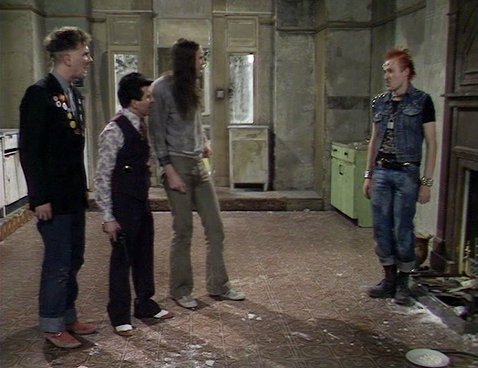
It was only recently I realised what even Wikipedia has figured out; for this episode and this episode only, the whole set is rotated 90 degrees from normal – to incorporate a brand new wall including a fireplace, an integral part of the plot:
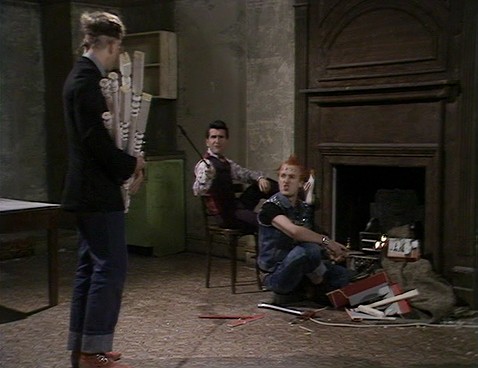
The wall that’s been removed for the audience to see through is the living room window; we get a single shot of it later in the episode as the lorry goes through the wall as a cutaway:
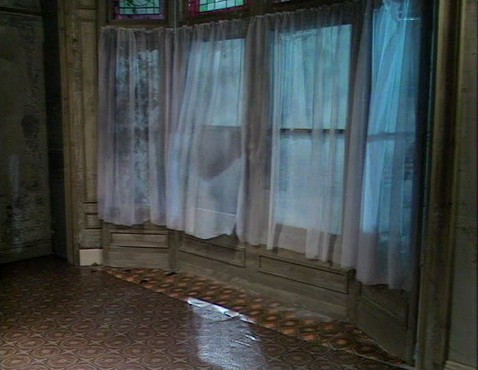
One good way to get a grip on how the set’s changed is looking at the fridge – here it is in Cash:
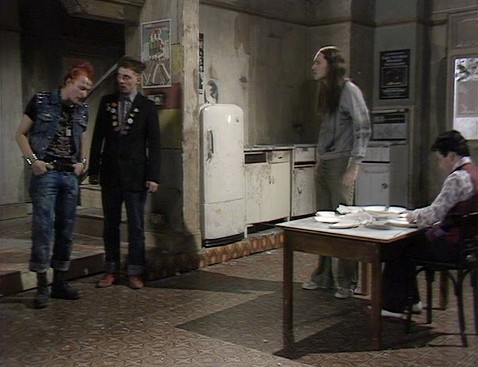
And here’s the orientation in Bambi, which also shows the living room window:
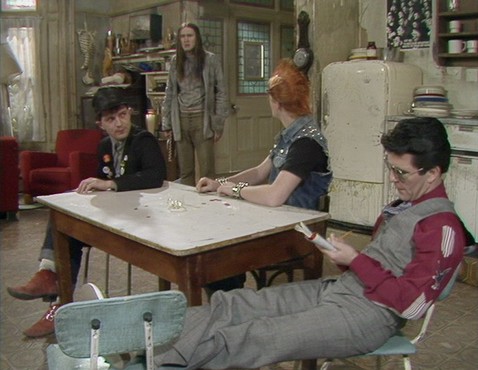
I often find myself wondering what the fourth wall of audience sitcom sets would look like if they existed. Trust The Young Ones to actually show us. Mind you, it’s hardly the only show to occasionally show us part of the fourth wall – I’m thinking especially of a great shot in Drop The Dead Donkey with Viking helmets – but it’s the only sitcom episode I can think of which physically turned the entire set around, and shot it from a different angle from the entire rest of the series.
Unless, of course – you know differently…

2 comments
Mark X on 1 February 2010 @ 6pm
There were scenes in the Only Fools and Horses special “To Hull and Back” with the fourth wall fully visible. That episode was made without an audience, meaning the closing scene in the Trotter’s flat could be recorded on film, with some shots taking in the wall usually removed for the benefit of the audience, as visible from about 2:30 into this video: http://www.youtube.com/watch?v=NPjioPVSAs0
On the other side of the pond, the final series of The Drew Carey Show made the switch to closed sets, meaning the fourth walls of Drew’s house were frequently in shot.
John Hoare on 1 February 2010 @ 6pm
Never seen that Fools clip before. I always find sets that are usually shot on video being shot on film fascinating. I remember it happening at least once in Blake’s 7 – and the same set being both shot on video and on film in the same episode!
Comments on this post are now closed.